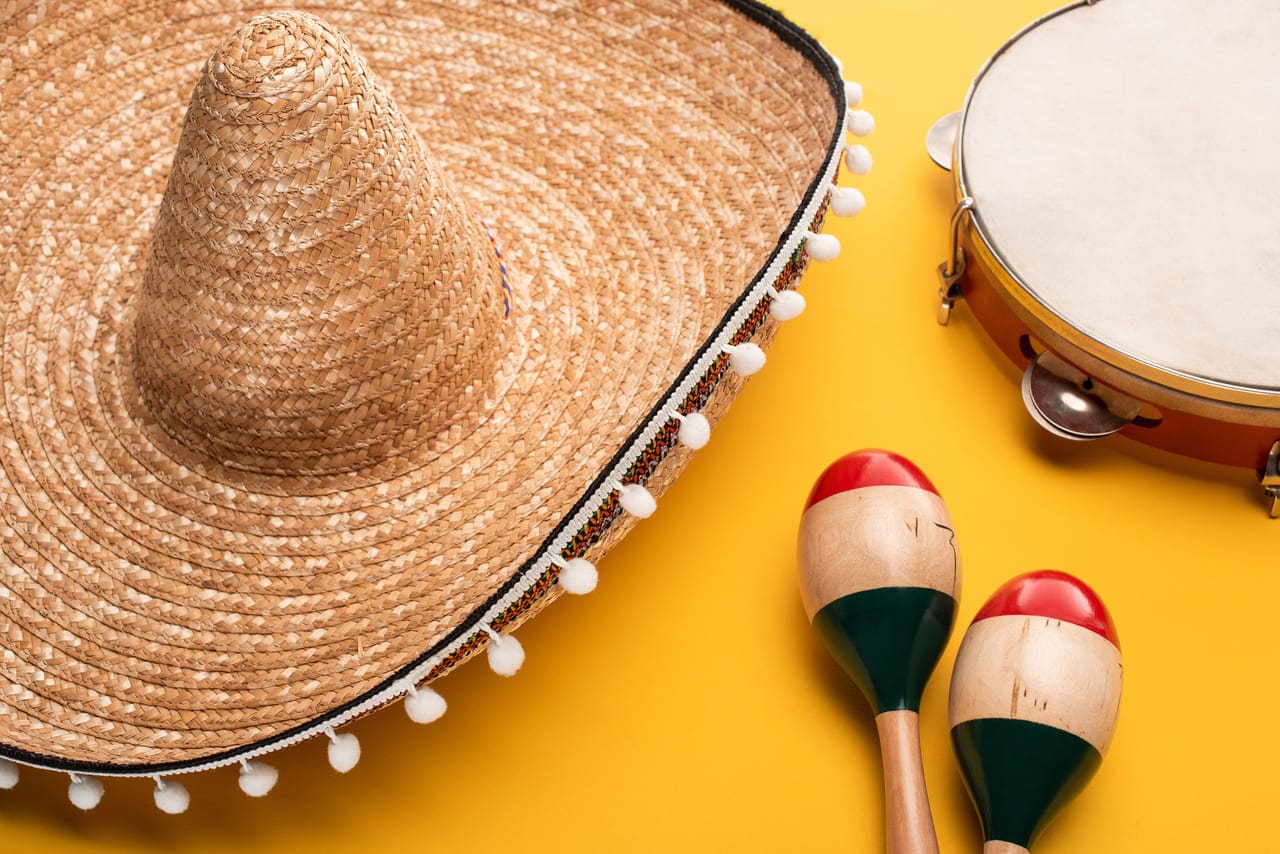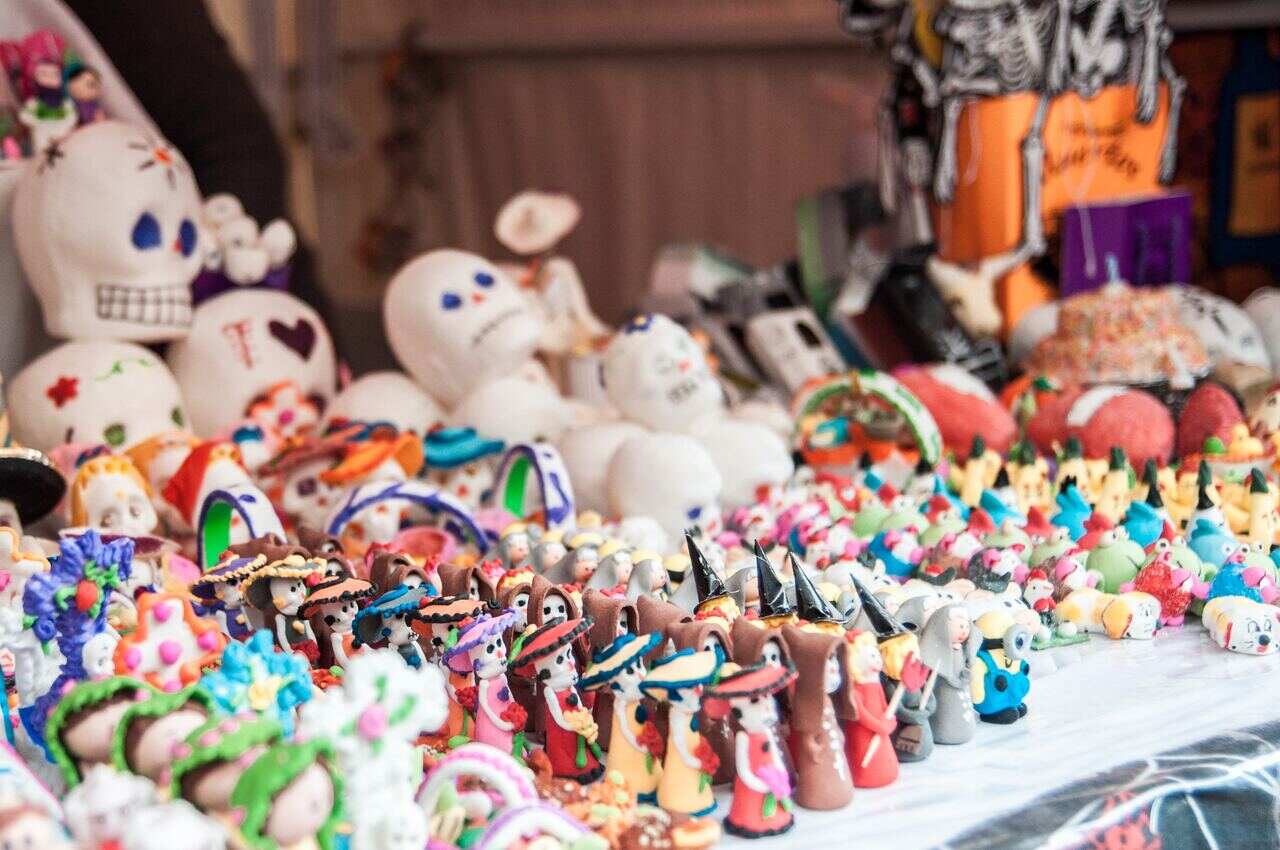
Traditions in Mexico: Exploring Culture, Food, and Dance
DATE:
Alright, let’s get to the essence! Picture this: You’re enveloped in the intoxicating sounds of mariachi music, captivated by dance groups performing Mexico’s national dance—the Mexican Hat Dance—in the heart of bustling Mexico City. Hold that thought! Add in Day of the Dead altars adorned with marigolds and sugar skulls, and street vendors tempting you with the unmistakable aroma of traditional Mexican food like corn tortillas and chili peppers. That’s just a tiny glimpse of Mexican traditions for you!
The beauty of Mexico is that each region—be it Puerto Vallarta’s beaches or Oaxaca City’s rich indigenous culture—offers its unique take on traditions. From the way Semana Santa, or Holy Week, is celebrated in central Mexico to how it’s observed in coastal regions, the variety is truly astounding.
Why should you care? Simple: These traditions are more than just footnotes in a travel guide. They’re the vibrant threads in a tapestry of rich history and cultural heritage that make up the Mexican spirit. Whether you’re curious about the real story behind Cinco de Mayo or the sacred importance of the blue agave plant in Mexican celebrations (hello, tequila!), you’re in for a treat.
So, if you’re ready to dive deep into this colorful, rhythmic, and utterly irresistible world of Mexican culture, you’ve come to the right place. Buckle up, amigos; it’s going to be a wild ride!
What is the main tradition in Mexico?
Dia de Los Muertos (Day of the Dead)
Do you know what is the most celebrated tradition in Mexico? Oh yes, let’s kick things off with the Day of the Dead, perhaps one of the most important Mexican holidays. Forget Halloween; this is a time to honor and remember the deceased in a truly unique way. Dia de los Muertos is not a sad occasion but a vibrant celebration filled with marigolds, sugar skulls, and plenty of good food. Families gather to create elaborate altars and share stories about their loved ones who have passed away.
|
Item |
Meaning |
|---|---|
|
Marigold Flowers |
Guide for the spirits to find their way |
|
Sugar Skulls |
Symbolize death but in a whimsical way |
|
Pan de Muerto |
Bread of the Dead, often decorated intricately |
|
Candles |
Light the way for the spirits |
|
Photos |
To remember and honor the deceased |
Mexico’s Rich Palette of Traditions
Cinco de Mayo
Contrary to popular belief, Cinco de Mayo is not Mexico’s Independence Day. It’s actually a celebration of the Mexican victory over French forces at the Battle of Puebla during the Mexican War. So, hold the tequila (or maybe don’t), because this day is more about cultural pride than margaritas.
Mexican Independence Day: The Real Deal
Speaking of independence, let’s get one thing straight: Mexican Independence Day falls on September 16th, not May 5th. Starting on the eve of the 15th, people gather to reenact El Grito de Dolores, the cry for independence. The phrase “Viva Mexico” resonates through the air as people celebrate with fireworks, food, and—yes—Mariachi bands.
Mariachi Bands and Mexico’s National Dance
Music, my friends, is the soul of Mexican culture. Mariachi bands, adorned in their charro suits, play folk music that ranges from the melancholic to the exuberant. These bands aren’t just musicians; they’re storytellers too! And what’s more, the Mexican Hat Dance, known as “Jarabe Tapatío,” is considered Mexico’s national dance. This energetic dance tells a tale of love and courtship, often performed during celebrations and even in schools.
DID YOU KNOW…?
Did you know that several Mexican traditions have been declared Intangible Cultural Heritage by UNESCO? Yep, that’s right! From the Day of the Dead celebrations to Mariachi music, these traditions aren’t just important to Mexicans; they’re considered valuable for the whole of humanity!
Semana Santa (Holy Week) and Easter Sunday
Moving on to the spiritual realm, Semana Santa, or Holy Week, is a big deal in Mexico. It kicks off with Palm Sunday and culminates in Easter Sunday celebrations. Parades, masses, and theatrical portrayals of biblical events are common during this week. In places like Taxco and Oaxaca City, the processions are particularly spectacular.
Dia de la Madre and Dia del Padre
Mother’s Day and Father’s Day in Mexico—Dia de la Madre and Dia del Padre—are treated with much love and respect. In fact, on Mother’s Day, many Mexican people attend a special midnight mass to honor the Virgin Mary, the ultimate mother figure in the Catholic tradition.
Christmas Eve and Dia del Niño
Christmas in Mexico is not a one-day event but a whole season of Mexican celebrations. It starts with the Day of the Virgin of Guadalupe on December 12 and extends to the Day of the Three Wise Men on January 6. Christmas Eve is particularly special, with many Mexicans attending a late-night mass, followed by a festive meal with family members.
Mexican Independence Day
Hold onto your sombreros! September 16th is Mexican Independence Day, a date commemorating the start of the Mexican War of Independence. This isn’t just a day; it’s a season of patriotism that starts with “El Grito de Dolores,” the cry for independence. Parades, fireworks, and the shouts of “¡Viva México!” fill the air as the country remembers its hard-won freedom. Now, that’s an important Mexican holiday!

What are traditional things in Mexico?
Diego Rivera and Mexican Muralism
When it comes to art, Diego Rivera is a name you just can’t overlook. His murals are not just beautiful; they tell the stories of Mexico’s rich history and social struggles. This makes Rivera’s art a tradition in itself, offering an inspiring glance into the depths of Mexican culture and heritage.
Mariachi Music: More Than Just Tunes
Let’s circle back to Mariachi music for a moment. This genre has been declared an intangible cultural heritage by UNESCO. Why? Because it’s more than just traditional Mexican music; it’s a form of storytelling, a celebration of life, and a way to preserve cultural traditions for future generations. Whether it’s love or loss, Mariachi music captures the essence of the Mexican spirit.
Folk Art: The Story of Pedro Linares and Alebrijes
Have you ever seen those fantastical, colorful creatures called Alebrijes? These folk art sculptures were created by Pedro Linares, and they’re an essential part of Mexican heritage. Usually crafted from paper-mâché, Alebrijes are vividly colored creatures that often combine elements of different animals. They are not just art; they’re an expression of creativity and imagination that has become an iconic part of Mexican culture.
Places That Resonate with Tradition
Mexico City: The Heart of It All
Ah, Mexico City. The capital is not just a bustling metropolis; it’s the epicenter of Mexican culture, history, and of course, traditions. From the Zócalo Square to the many museums and historic sites, Mexico City offers a glimpse into both ancient and modern Mexican traditions. It’s the perfect place to immerse yourself in everything Mexico has to offer.
Puerto Vallarta: Where Tradition Meets the Sea
Sandy beaches, crystal-clear waters, and yes—endless traditions. Puerto Vallarta is more than just a resort town; it’s a pocket of Mexico where you can experience local customs, from Mariachi bands to traditional Mexican food and festivals.
Oaxaca City: A Blend of Indigenous Traditions and Spanish Influence
Oaxaca City is like a living museum of Mexican culture. From the indigenous crafts to the Spanish colonial architecture, Oaxaca is a blend of the old and the new. Don’t forget to try the local cuisine, which includes traditional dishes like mole and tlayudas!

The Rich Tapestry of Mexico Awaits You
Wow, we’ve journeyed through the myriad traditions that make up the Mexican cultural landscape. From the soul-stirring Day of the Dead to the exhilarating Dance of the Flyers, the tapestry of traditions in Mexico is as colorful as it is profound.
Want to dive even deeper? Learning Spanish is your golden ticket. At SpanishVIP, our Dedicated Teachers and Student Success Advisors are eager to help you explore this vibrant culture from the inside out.
Start with a free 1:1 class or enjoy free 7 days of group classes. Because understanding Mexico starts with speaking its language. Viva la fiesta!








